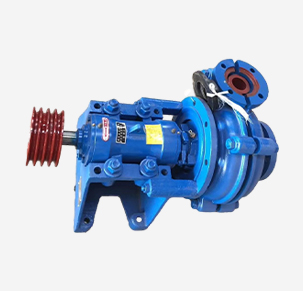Samoan
- Afrikaans
- Albanian
- Amharic
- Arabic
- Armenian
- Azerbaijani
- Basque
- Belarusian
- Bengali
- Bosnian
- Bulgarian
- Catalan
- Cebuano
- Corsican
- Croatian
- Czech
- Danish
- Dutch
- English
- Esperanto
- Estonian
- Finnish
- French
- Frisian
- Galician
- Georgian
- German
- Greek
- Gujarati
- Haitian Creole
- hausa
- hawaiian
- Hebrew
- Hindi
- Miao
- Hungarian
- Icelandic
- igbo
- Indonesian
- irish
- Italian
- Japanese
- Javanese
- Kannada
- kazakh
- Khmer
- Rwandese
- Korean
- Kurdish
- Kyrgyz
- Lao
- Latin
- Latvian
- Lithuanian
- Luxembourgish
- Macedonian
- Malgashi
- Malay
- Malayalam
- Maltese
- Maori
- Marathi
- Mongolian
- Myanmar
- Nepali
- Norwegian
- Norwegian
- Occitan
- Pashto
- Persian
- Polish
- Portuguese
- Punjabi
- Romanian
- Russian
- Samoan
- Scottish Gaelic
- Serbian
- Sesotho
- Shona
- Sindhi
- Sinhala
- Slovak
- Slovenian
- Somali
- Spanish
- Sundanese
- Swahili
- Swedish
- Tagalog
- Tajik
- Tamil
- Tatar
- Telugu
- Thai
- Turkish
- Turkmen
- Ukrainian
- Urdu
- Uighur
- Uzbek
- Vietnamese
- Welsh
- Bantu
- Yiddish
- Yoruba
- Zulu
Telephone: +86 13120555503
Email: frank@cypump.com
Dec . 07, 2024 11:43 Back to list
Choosing the Right Sump Pump for Your Septic System Needs
Sump Pumps for Septic Systems An Essential Component
Sump pumps play a crucial role in the effective functioning of septic systems, particularly in areas susceptible to flooding or in homes without a natural gravity drain. Understanding the importance, functionality, and maintenance of sump pumps in septic systems can help homeowners ensure the longevity and efficiency of their wastewater treatment process.
What is a Sump Pump?
A sump pump is a device used to remove excess water from a sump pit, which is typically located in the basement or crawl space of a home. While sump pumps are most commonly associated with protecting foundations from flooding, they also serve a vital purpose in septic systems. In a septic system, the sump pump helps manage wastewater by transferring it from a lower elevation (the septic tank) to a higher elevation (the drain field or leach field), ensuring proper distribution and drainage of the treated effluent.
Why Use a Sump Pump in Septic Systems?
1. Flood Prevention In regions prone to heavy rainfall or flooding, groundwater can overwhelm the septic system. A sump pump helps mitigate this risk by preventing water from backing up into the system, which can lead to malfunctions and costly repairs.
2. Efficient Wastewater Management For homes built in low-lying areas where gravity cannot effectively push wastewater to the drain field, a sump pump becomes indispensable. It actively moves wastewater to areas where it can be treated and safely absorbed into the soil.
3. Maintaining System Health A properly functioning sump pump aids in maintaining the overall health of the septic system. By preventing excessive water accumulation, it reduces the risk of soil saturation, which can compromise the system’s ability to properly filter wastewater.
Selecting the Right Sump Pump
When choosing a sump pump for a septic system, homeowners should consider several factors
- Horsepower The power of the pump is critical
. Sump pumps typically range from 1/4 to 1 HP, with the higher horsepower pumps suited for tougher conditions.sump pump for septic systems

- Type of Pump There are two main types of sump pumps submersible and pedestal. Submersible pumps are positioned within the sump pit, while pedestal pumps are located above the pit. Submersible pumps are generally more efficient and quieter, but both types have their own advantages.
- Capacity It's essential to select a pump with adequate capacity to handle the anticipated volume of wastewater. This is usually measured in gallons per hour (GPH).
Maintenance Tips
To ensure a sump pump operates effectively in a septic system, routine maintenance is crucial
1. Regular Testing Homeowners should periodically test their sump pump to ensure it’s functioning properly. This usually involves pouring water into the sump pit to see if the pump activates and moves water out efficiently.
2. Cleaning Keeping the sump pit clean of debris and sediment can help the pump operate optimally. It's advisable to inspect the pit at least once a year.
3. Check for Blockages Inspect the discharge pipe for any blockages or obstructions that might prevent wastewater from being effectively discharged.
4. Professional Inspection Having a professional inspect the sump pump and septic system periodically can identify potential issues before they become serious problems.
Conclusion
Sump pumps are a valuable asset in the maintenance of septic systems, especially for homes in flood-prone areas or those without conventional drainage solutions. By ensuring proper installation, maintenance, and operation, homeowners can protect their septic systems from water-related issues, leading to a long-lasting and efficient wastewater management process. Understanding the integral role that sump pumps play can help homeowners make informed decisions about their septic systems and safeguard their property.
-
Horizontal Split Case Pump with GPT-4 Turbo | High Efficiency
NewsAug.01,2025
-
ISG Series Pipeline Pump - Chi Yuan Pumps | High Efficiency, Durable Design
NewsAug.01,2025
-
Advanced Flue Gas Desulfurization Pump with GPT-4 Turbo | Durable & Efficient
NewsJul.31,2025
-
ISG Series Vertical Pipeline Pump - Chi Yuan Pumps | Advanced Hydraulic Design&Durable Construction
NewsJul.31,2025
-
ISG Series Vertical Pipeline Pump - Chi Yuan Pumps | Energy Efficient & Low Noise
NewsJul.31,2025
-
pipeline pump - Chi Yuan Pumps Co., LTD.|High Efficiency&Low Noise
NewsJul.31,2025










